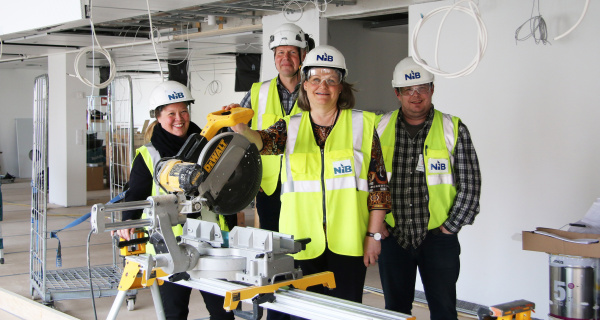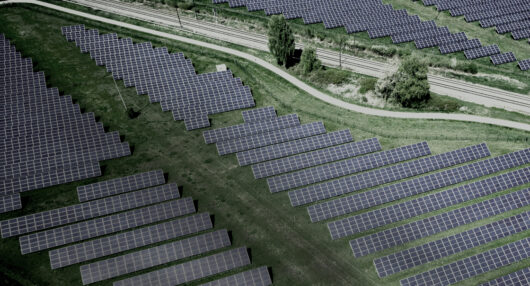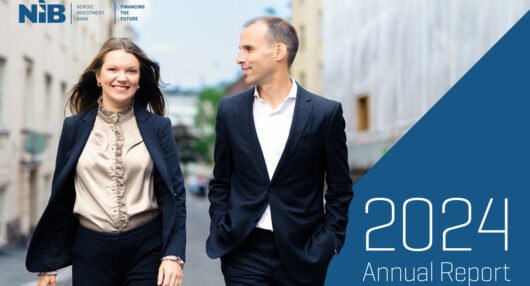We believe it is important to measure, monitor, report, and manage our internal processes for business travel, energy performance, recycling, waste management, and responsible procurement consistently. This is how we learn how to further avoid and reduce our internal environmental impact. Understanding that our footprint cannot be entirely avoided, we compensate for the residual emissions and voluntarily support climate projects both in the Nordic-Baltic region
We seek to engage with experts, NGOs, clients, employees, member country authorities, and other key stakeholders to learn from best practices and innovative cases. We understand that low carbon operations, targets, and the ways to engage with climate action will evolve with scientific research and technology development. This will be a journey and we will constantly measure, innovate, learn, and collaborate in order to achieve better results.
Measure, monitor and report
We have been calculating our internal carbon footprint since 2019 according to the Greenhouse Gas Protocol’s Corporate Accounting and Reporting Standard (GHG protocol). This allows us to take into account the full scope of greenhouse gas emissions in NIB’s value chain.
The calculation boundaries have been defined to include Scope 1, which entails combustion of fuels in stationary sources, and combustion of fuels in company owned/controlled cars, and Scope 2, which includes purchased electricity, purchased heat, and purchased cooling.
The Scope 3 Upstream emissions from purchased goods and services, capital goods, fuel and energy related activities (not included in the Scope 1 and 2), upstream transportation and distribution, waste, business travel, employee commuting, and upstream leased assets are also accounted for in the calculations.
NIB’s carbon impact from financing (Scope 3 downstream emissions from the investments) are excluded from the internal footprint results as their impact has been separately. Furthermore, the procurement of consultancy services are excluded from the calculation due to the lack of emission data from ongoing activities.
Our reporting practices enables us to systematically calculate, track, and manage carbon emissions. Read the latest report to learn more about how we manage our internal operations.
Avoid and reduce
We avoid carbon emissions whenever possible in a cost-effective and strategic manner. We aim to reduce our carbon footprint as much as we can. Here are some of the actions we have taken so far.
Scope 1: Direct Emissions from owned and controlled sources
NIB has a reserve power generator, which is subject to regular checks. The annual test runs and fuel use is included.
We include emissions intensity as part of our procurement criteria to enable the purchase of low-carbon vehicles. All NIB’s company cars used for administrative purposes are hybrids.

Scope 2: Emissions from the generation of purchased energy
Our headquarters in Helsinki, Finland, is fully powered with carbon free energy.
- In 2013, NIB switched to 100% renewable electricity in our offices. The electricity we purchase is covered by Guarantees of Origin, which verify that our electricity has been produced with renewable energy sources.
- In 2018 and 2019, the district heating at our headquarters constituted about 20% of the Bank’s total greenhouse gas emissions.
- In 2020, NIB switched its offices to district heating, which is 100% based on waste heat. This will significantly decrease our emissions.
- Since 2020, NIB’s offices have been connected to district cooling that is 100% carbon free. This will have an impact on our carbon emissions.
- We are continuously designing our headquarters to be as energy efficient as possible. We have a smart and intuitive building automation system. In addition, office lights are changed to energy-efficient LED lighting.
- During 2022, we developed our monitoring for key indicators such as water, and heating and cooling management. This will improve how we follow up and report on our internal operations.
- In 2023, NIB launched its Climate Strategy where the Bank has also committed to reducing its internal Scope 1 and Scope 2 emissions by 35% by 2030 from the 2022 base year.
Scope 3: Indirect emissions that occur in NIB’s value chain
As an international financial institution, business travel is an unavoidable part of our operations, with flights significantly adding to our emissions. In 2023, our internal carbon footprint increased 26% from the previous year. This was mainly due to increased travelling.
NIB’s waste management is based on the principles reuse, reduce, and recycle. We aim for our business operations to be paperless, and many of our processes are totally digitalised. During office refurbishments, NIB’s old furniture is reused or recycled. NIB has also stopped using disposable items in the office entirely.
NIB provides its employees with public transport and bicycle benefits to promote environmentally friendly commute to work.
Greenhouse gas emissions from NIB’s internal operations
| GHG emission source | 2020 | 2021 | 2022 | 2023 | 2024 |
|---|---|---|---|---|---|
| Scope 1 | 14 | 15 | 13 | 17 | 18 |
| Scope 2 | 29 | 32 | 33 | 15 | 16 |
| Scope 3 | 761 | 718 | 927 | 1,190 | 1,703 |
| Total emissions (market based) | 803 | 765 | 972 | 1,222 | 1,737 |
Compensating for our footprint
We follow the best practices in order to find the most suitable ways to mitigate our footprint. When selecting projects to compensate for the residual emissions that cannot be avoided, we evaluate the monitoring, reporting and verification methodology, and check against set rules for issues such as additionality and avoidance of double counting.
To compensate for our footprint in 2018, 2019 and 2020, we have supported climate projects that have been awarded the Gold Standard. This is an internationally recognised standard, which also takes into consideration the positive co-benefits for sustainable development.
NIB’s carbon compensation projects support the UN SDGs


To offset our internal emissions from 2021, 2022, 2023 we have purchased carbon dioxide removal credits from projects that store CO2 in soil, biochar, bio-based construction applications and carbonated materials. This way, NIB not only ensures durable removal of its own carbon footprint but also supports circular economy developments. The carbon credits are not counted as emission reduction towards our climate target progress.
In addition to carbon removal projects, we also voluntarily support environmental projects in the Nordic and Baltic countries. So far, NIB’s contributions support peatland and nature restauration works, dam removal and conservation of endangered species in Finland, protecting old-growth forests in Lithuania, as well as cleaning the port operations around the Baltic Sea. Through supporting these projects, NIB aims to enhance biodiversity in our region.
NIB Climate Strategy
NIB is committed to addressing the climate challenge in accordance with the Paris Climate Agreement and become a net-zero bank by 2050
Subscribe to NIB's newsletter!
Get updates on sustainable finance directly to your inbox.


